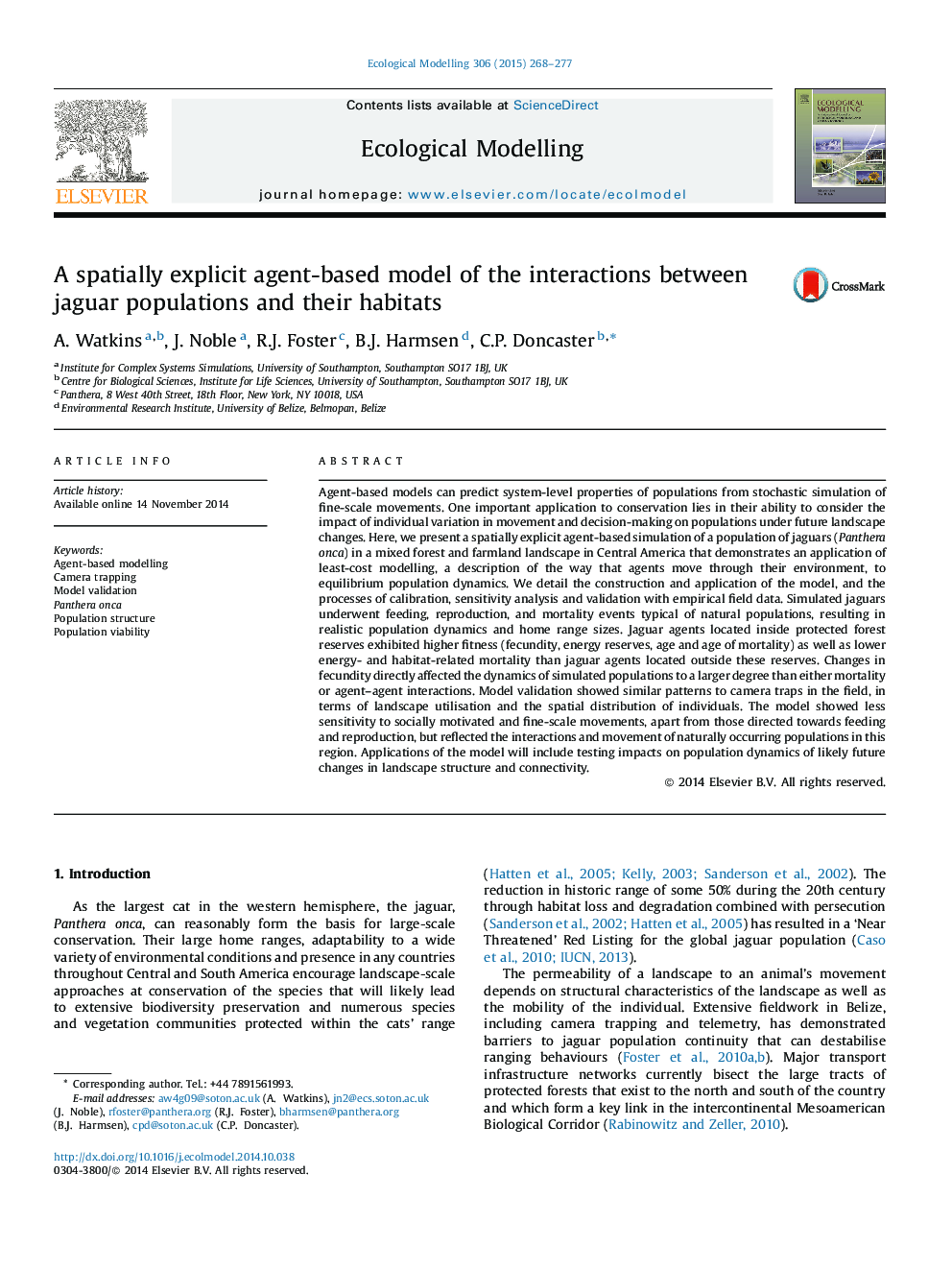| کد مقاله | کد نشریه | سال انتشار | مقاله انگلیسی | نسخه تمام متن |
|---|---|---|---|---|
| 4375731 | 1617440 | 2015 | 10 صفحه PDF | دانلود رایگان |
• We integrate a least-cost model of jaguar movements with an agent-based simulation.
• We set this integrated model in the real-world context of southern Belize.
• Model jaguars fed, reproduced and died similar to typical natural populations.
• Agents inside protected reserves exhibited higher fitness than those outside.
• Model validation showed similar patterns to field data in landscape utilisation.
Agent-based models can predict system-level properties of populations from stochastic simulation of fine-scale movements. One important application to conservation lies in their ability to consider the impact of individual variation in movement and decision-making on populations under future landscape changes. Here, we present a spatially explicit agent-based simulation of a population of jaguars (Panthera onca) in a mixed forest and farmland landscape in Central America that demonstrates an application of least-cost modelling, a description of the way that agents move through their environment, to equilibrium population dynamics. We detail the construction and application of the model, and the processes of calibration, sensitivity analysis and validation with empirical field data. Simulated jaguars underwent feeding, reproduction, and mortality events typical of natural populations, resulting in realistic population dynamics and home range sizes. Jaguar agents located inside protected forest reserves exhibited higher fitness (fecundity, energy reserves, age and age of mortality) as well as lower energy- and habitat-related mortality than jaguar agents located outside these reserves. Changes in fecundity directly affected the dynamics of simulated populations to a larger degree than either mortality or agent–agent interactions. Model validation showed similar patterns to camera traps in the field, in terms of landscape utilisation and the spatial distribution of individuals. The model showed less sensitivity to socially motivated and fine-scale movements, apart from those directed towards feeding and reproduction, but reflected the interactions and movement of naturally occurring populations in this region. Applications of the model will include testing impacts on population dynamics of likely future changes in landscape structure and connectivity.
Journal: Ecological Modelling - Volume 306, 24 June 2015, Pages 268–277
